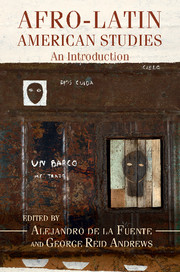Book contents
- Afro-Latin American Studies
- Afro-Latin America
- Afro-Latin American Studies
- Copyright page
- Contents
- Figures
- Tables
- Contributors
- Acknowledgments
- 1 The Making of a Field
- Part I Inequalities
- Part II Politics
- 6 Currents in Afro-Latin American Political and Social Thought
- 7 Rethinking Black Mobilization in Latin America
- 8 “Racial Democracy” and Racial Inclusion
- Part III Culture
- Part IV Transnational Spaces
- Index
- References
8 - “Racial Democracy” and Racial Inclusion
Hemispheric Histories
from Part II - Politics
Published online by Cambridge University Press: 24 April 2018
- Afro-Latin American Studies
- Afro-Latin America
- Afro-Latin American Studies
- Copyright page
- Contents
- Figures
- Tables
- Contributors
- Acknowledgments
- 1 The Making of a Field
- Part I Inequalities
- Part II Politics
- 6 Currents in Afro-Latin American Political and Social Thought
- 7 Rethinking Black Mobilization in Latin America
- 8 “Racial Democracy” and Racial Inclusion
- Part III Culture
- Part IV Transnational Spaces
- Index
- References
Summary

- Type
- Chapter
- Information
- Afro-Latin American StudiesAn Introduction, pp. 264 - 316Publisher: Cambridge University PressPrint publication year: 2018
References
- 31
- Cited by

